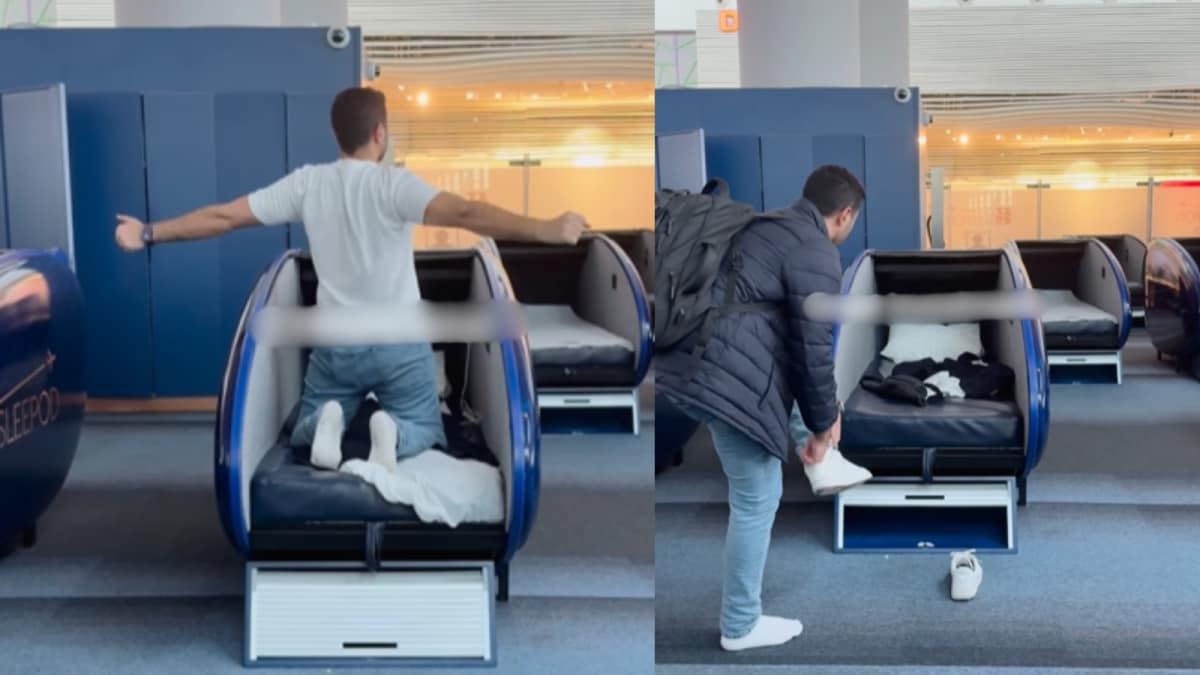ARTICLE AD BOX
Last Updated:October 23, 2025, 04:07 IST
On flight AI117 from Amritsar to Birmingham, the Ram Air Turbine folded out of the fuselage while the jet was at a low altitude on its final approach

Despite the uncommanded deployment, Air India confirmed the aircraft landed safely, with all electrical and hydraulic parameters found to be normal. Representational pic/Reuters
The unexpected deployment of the emergency power system on Air India Flight 117 during its landing approach at Birmingham on October 4 has been revealed to be part of a worrying global trend affecting dozens of Boeing 787-8 Dreamliner aircraft.
The incident involved the aircraft’s Ram Air Turbine (RAT), a critical safety feature designed to deploy automatically to generate emergency electrical and hydraulic power only in the event of a total failure of both engines or the main electrical systems. On flight AI117 from Amritsar to Birmingham, the RAT, a small wind-powered turbine, folded out of the fuselage while the jet was at a low altitude (reported between 400 and 1,600 feet) on its final approach. Despite the uncommanded deployment, Air India confirmed the aircraft landed safely, with all electrical and hydraulic parameters found to be normal.
Following the incident, the aviation regulator, the Directorate General of Civil Aviation (DGCA) in India, launched a detailed investigation and requested a comprehensive report and global data on similar occurrences from Boeing. The manufacturer has reportedly informed the regulator that at least 31 similar incidents have occurred worldwide on the 787 aircraft, suggesting a systemic flaw.
The root cause identified by Boeing is a faulty locking mechanism in the RAT’s stowage system. The malfunction is believed to occur when technicians stow the turbine while hydraulic pressure remains high, which can prevent a toggle assembly from locking properly. Subsequent vibrations from operations like landing gear deployment or runway contact can then shake the RAT loose, causing its unexpected deployment. Most of the recorded incidents reportedly occurred within six months of maintenance requiring the RAT to be manually stowed. Boeing introduced an improved shuttle valve in 2014 and guidance instructing technicians to hold the stow switch longer to allow hydraulic pressure to drop, ensuring a proper lock.
The event has heightened safety scrutiny on the Boeing 787-8 fleet, particularly following a catastrophic crash of another Air India 787-8 in June, where the RAT was also deployed moments after take-off during the loss of engine power. The Federation of Indian Pilots has urged the DGCA to conduct a thorough safety audit and reinspect the electrical systems of all 787s operating in the country. In response, Air India was ordered to reinspect the RAT mechanisms on its 787 fleet, especially those that recently underwent maintenance that could affect the system.

Pathikrit Sen Gupta is a Senior Associate Editor with News18.com and likes to cut a long story short. He writes sporadically on Politics, Sports, Global Affairs, Space, Entertainment, And Food. He trawls X via ...Read More
Pathikrit Sen Gupta is a Senior Associate Editor with News18.com and likes to cut a long story short. He writes sporadically on Politics, Sports, Global Affairs, Space, Entertainment, And Food. He trawls X via ...
Read More
First Published:
October 23, 2025, 04:07 IST
News india RAT Race At 1,000 Feet: Air India’s Birmingham Scare Reveals Global Boeing 787 Flaw
Disclaimer: Comments reflect users’ views, not News18’s. Please keep discussions respectful and constructive. Abusive, defamatory, or illegal comments will be removed. News18 may disable any comment at its discretion. By posting, you agree to our Terms of Use and Privacy Policy.
Read More

 4 hours ago
5
4 hours ago
5









 English (US) ·
English (US) ·